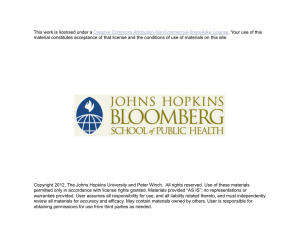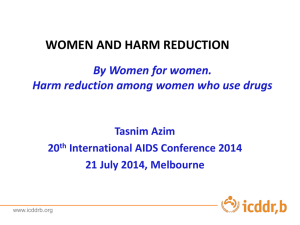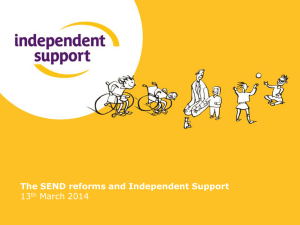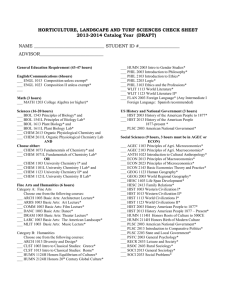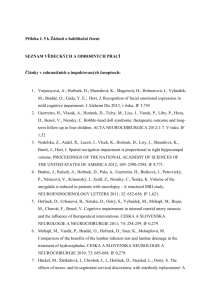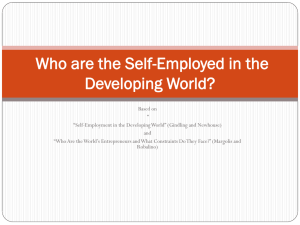Strategies for capacity building for health systems research in LMIC
advertisement
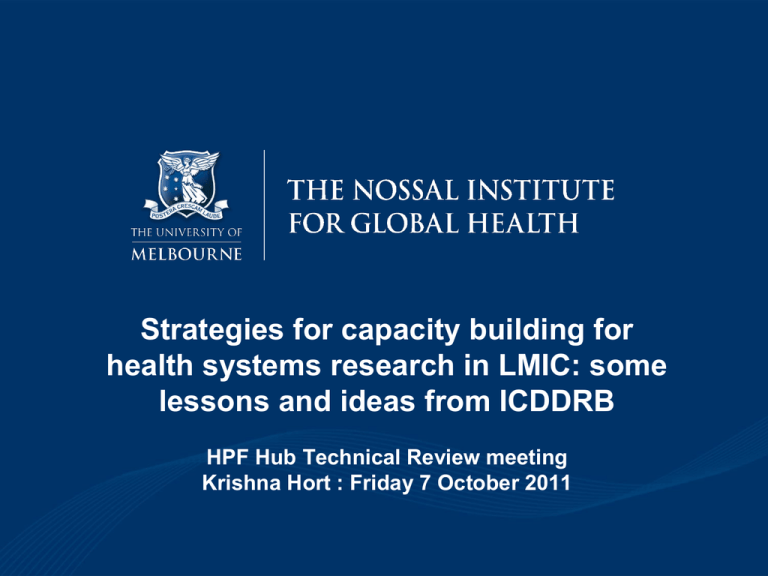
Strategies for capacity building for health systems research in LMIC: some lessons and ideas from ICDDRB HPF Hub Technical Review meeting Krishna Hort : Friday 7 October 2011 Introduction • Engaged by donors of ICDDR,B in 2006 to review support, and in 2010 to follow up • Article describing results published in Health Research Policy and Systems: 2011, 9: 31 as • ‘Mahmood S, Hort K, Ahmed S, Salam M, Cravioto A. Strategies for capacity building for health research in Bangladesh: Role of core funding and a common M&E Framework’ • Acknowledge co-authors in this presentation based on collective work Literature review on research capacity building in LMIC • Definition of research capacity: ‘ an ability of individuals, organisations and systems to perform and utilise health research effectively, efficiently and sustainably’ (Bates et al, 2006) • Requires both institutional support and improving individual research capacity Literature review on research capacity building in LMIC Some of the challenges: • Adequate funds for researcher and staff salaries; • Training of individual researchers; • Career structure for researchers; • Good research management; • Access to scientific and technical information; • Partnerships with international groups; • Effective communication with research users; • Competent and motivated research leaders Role of external support • Requires long term substantial financial support from development partners • Technical support from international research expertise • Issues of different perspectives of development partners (concern for research uptake) • Different development partners may have different priorities and research interests • Lack of evidence on effective development partner support for research capacity building ICDDRB, Introduction • ICDDR,B: international research institute located in Bangladesh • Established in 1960 • International board of management • Broad scope: infectious diseases, nutrition, population, health systems, environment • Also provides surveillance, clinical services (diarrhoea), and training • 1000 + staff, budget $38 million ICDDRB: situation in 2006 • 55 donors and research grants, separate topics and reporting • Reluctant to pay 30% management levy • Small group of donors contribute to infrastructure • Unable to progress own strategic priorities • Difficult to invest in staff development or research infrastructure ICDDRB: Core funding proposal • Group of donors agree to provide ‘unearmarked’ core funds • Based on implementing priorities in ICDDRB strategic plan • Limited amount for ‘seed funding’ research • Agreed common M&E framework to monitor progress • Single financial report Core funding: review after 3 years: 2010 • Core funds rise from 25% to 40% total; research grants rise from $13m to $23m • Savings in reporting • Improved relationship with core donors • Improved sense of ownership and direction • Progress against strategic priorities • Seed funding attracts and retains returned PhDs • Supports more use of strategic direction throughout institute Lessons learnt • Importance of investment in ‘core’ capacity building of institutional supports • Autonomy and ability of institution to determine and pursue its priorities an important aspect of capacity • Use of un- earmarked core funding as potential mechanism • Requires significant capacity from receiving institution + good relationships with donors Strategies for hospital reform • Some introductory thoughts: • Why do hospitals matter ? Role of hospitals in health systems Dixon J, Alakeson V. Reforming health care: why we need to learn from international experience. Nuffield Trust Briefing September 2010 System reform • Policies that influence organisations • National targets and performance management in UK NHS • Institutional regulation – accreditation • Financial incentives- shift from fee for service incentive to oversupply; encourage competition between providers • Local accountability – UK impact unclear Intra-organisational levers • Most providers influenced more by organisational setting than system levers. • Encourage clinical professionals to be more engaged in management and leadership of organisations: governance and patient safety initiatives, pathways of care; motivate peers • Where system governance weak, organisations lead in initiatives Individual motivation & behaviour • Most potent force to improve care is intrinsic motivation of clinical professionals; and intrinsic motivation of patients to improve their health. • Professional bodies address standards but may not address intrinsic motivation. • Encourage patients to take more active role in their care; financial incentives Individual motivation & behaviour • Interaction between system reform levers providing external challenge to organisations, and intra-organisation levers on intrinsic motivation unexamined and unevaluated. • Problems occur when dissonance / poor alignment • Do we neglect intrinsic motivation and focus on economic lens ? Organisations provide excellent care by attracting staff with mission and ethos. Working groups • 3 groups – In country networks in Asia – Inter-country networks in Asia – Pacific networks • Questions – What can networks contribute to evidence based policy making in each context ? – What management support do networks need in each context ?

